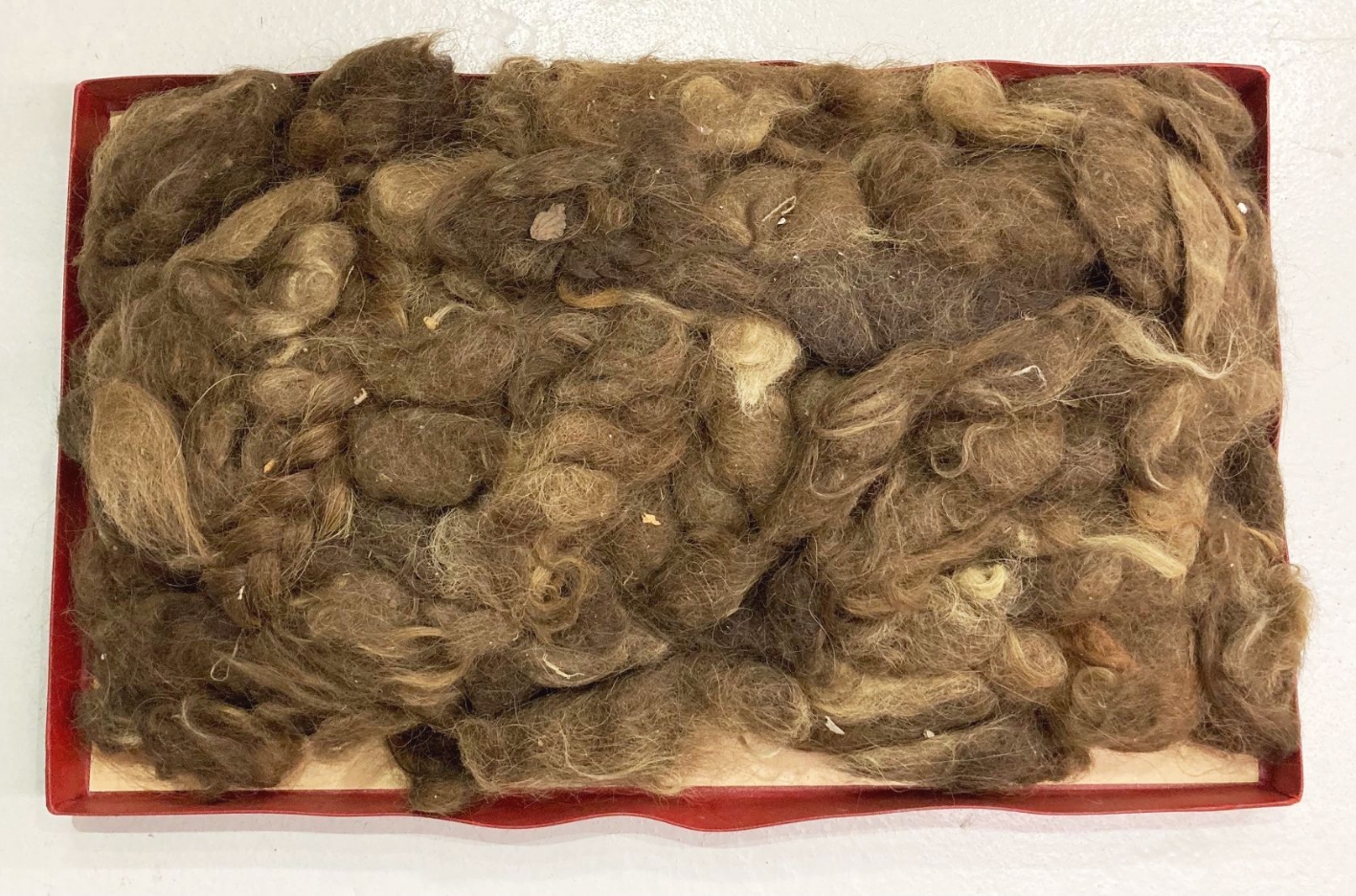
Human hair from Auschwitz
In the spring of 1955, the Auschwitz-Birkenau State Museum sent a consignment of women's hair, women's and children's shoes and Zyklon B cans to the Museum of German History in Berlin (East), which forwarded some of these objects to the Buchenwald National Memorial on 2 April 1955.
The objects were presented in two additional display cases in the permanent exhibition in the inmates' canteen, which had been on display since August 1954.
In the "Camp Museum" exhibition in the former disinfection centre, which opened in 1964, the hair from Auschwitz was shown in Section VII under the heading "Profit from millions of murders" together with the women's and children's shoes. When this exhibition came to an end in the early 1980s, the hair from Auschwitz was no longer on display and was instead stored in the collection's depots.
Other human hair comes from the estate of Pave Matulić (1925-2005). The political Yugoslavian prisoner of the Dachau and Buchenwald concentration camps returned to his homeland after liberation. From the early 1960s, he developed several smaller exhibitions. He used numerous objects taken from the Buchenwald concentration camp after liberation. In order to be able to describe the events in the extermination camps, he asked the Auschwitz-Birkenau State Museum for human hair from murdered prisoners of the Auschwitz concentration camp, which then became exhibits in his exhibitions. His son handed over his father's estate to the collection in April 2019.
Skull
The Polish political prisoner Józef Pribula (1919-1984) was sent to Buchenwald concentration camp in October 1939. After being deployed in various labour detachments, he worked in the pathology department from January 1944. There, he recognised a fellow inmate among the corpses transferred to the pathology department, prepared his skull and took it home with him after the liberation. In May 2015, "the skull of a friend", which according to his family Pribula kept in his study, was handed over to the memorial by his grandson along with other documents and objects from his estate.
Despite intensive efforts, the Buchenwald Memorial has not yet succeeded in locating the name of the deceased in order to make contact with his family.

